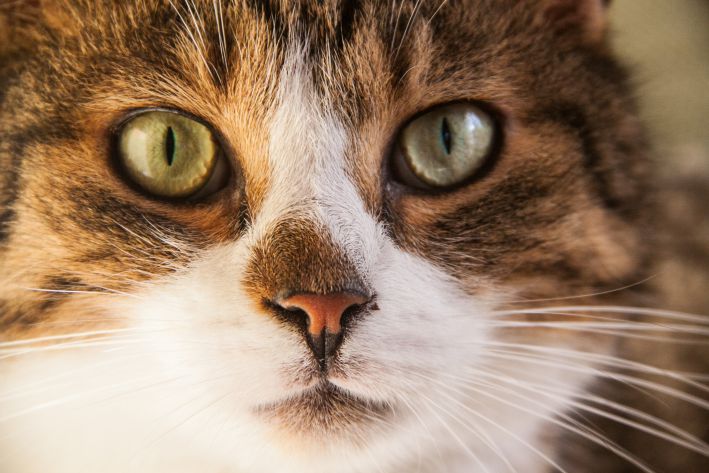Secrets of Cat Aggression: Why Cats Don't Like Dogs
Cat-dog wars are not only the subject of numerous Internet memes, but also a very real problem for many pet owners.
After all, representatives of these species do not always get along with each other.
Conflicts are especially often initiated by cats. Why are cats so aggressive towards dogs? Let's figure it out.
To understand the reasons for the tense relationship between these species, we need to look at the history of their domestication. The cat and the dog followed completely different evolutionary paths.
Firstly, the cat domesticated itself by taming humans. But the dog became a domestic animal thanks to the active efforts of humans.

Secondly, if a dog historically performed security, guard and other “service” functions, then a cat initially lived its own life – it caught mice and received food and shelter for it.
It so happened that a cat is much less dependent on a person and does not consider itself someone's subordinate. Unlike dogs, which are pack animals by nature and recognize the authority of the owner.
These deep differences are what cause competition between cats and dogs when they meet.
Predator vs Omnivore
Another reason for mutual hostility is hidden in the peculiarities of the eating behavior of these animals. Cats are typical predators, eating mainly meat. And dogs are omnivores with less pronounced predatory behavior.
In nature, there is usually competition between predators for prey and territory. Perhaps some genetically embedded stereotypes cause aggression in cats towards dogs.
Cats are more secretive and less social creatures than packs of dogs. Therefore, they jealously guard their territory from strangers, and a dog for a cat is initially a stranger, a competitor. Hence the hostile reaction. Although in fact there is no real competition for resources between domestic pets.
Body language
Another key point that causes aggression in cats is the incorrect decoding of dog body language. And vice versa - cat behavior by dogs.
The thing is that cats and dogs communicate differently. Dogs have more developed sound communication – barking, howling, growling. And cats rely more on “silent” signals – postures, facial expressions, ear and tail movements.
When a dog happily runs to a cat, wagging its tail and trying to sniff it, the cat perceives this as a threat and an attempt on its safety. And playful poses of dogs (showing teeth, trying to "squeeze" the cat) can look very aggressive in the eyes of a cat.
The result is fear and a counterattack as a means of self-defense. Of course, with a longer acquaintance and joint upbringing from an early age, cats and dogs are able to get used to each other. But initially they speak different languages.
Feeling of superiority
Finally, the purely psychological factor of competitive behavior cannot be ruled out. As experienced veterinarians and breeders note, many cats have a rather domineering, independent character.
They consider themselves, if not higher in status than humans, then certainly higher than dogs. A cat finds it humiliating that a dog unquestioningly obeys its owner and carries out some commands. And from the owners, cats often receive affection and attention just like that, and not for "merits."
Perhaps it is this sense of superiority and the desire to "put dogs in their place" that sometimes pushes cats to unprovoked attacks and displays of aggression. Although, of course, there can be no talk of any sense of revenge or jealousy in the human sense of the word.
How to improve pet relationships
So, we have found out that there are many reasons for cat aggression towards dogs. But this does not mean that conflicts are inevitable. There are a number of ways to help pets find a common language.
First of all, it is important to properly introduce the animals and control their interaction. This should be done gradually and carefully, giving them the opportunity to get used to each other under your supervision. Do not immediately leave them alone without supervision, especially if there is a suspicion of aggressive behavior of one of the pets.
It is also helpful to provide each pet with a separate space where they can hide and feel safe. This will help reduce stress and prevent conflicts.
Gradually teaching commands and playing together also helps strengthen the relationship between the cat and dog. Reward them for good behavior and teach them to respect each other.
In case of serious behavioral problems, it is recommended to seek help from a professional trainer or veterinarian. They can offer individual methods and strategies to improve the relationship between the cat and dog.
Ultimately, although cats and dogs may have different preferences and personalities, with the right approach and patience, they can become good friends and companions in your home.
Earlier we wrote about how to understand that a parrot is sick.
